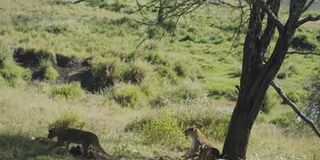Invasive weeds now threaten TZ tourism

What you need to know:
The situation is more pronounced in the floor of the Ngorongoro Crater where the rather ornamental, pinkish weeds have virtually suppressed the growth of indigenous grasses and some plants.
Arusha. Tourism, the multi-million dollar industry, would suffer considerably if the proliferation of invasive plant species in protected areas is not contained in the long run.
In some areas, the flowery invasive weeds have taken over from the indigenous grasses consumed by wild animals, sending them out or on the periphery of their favoured rangelands.
Environment stakeholders and scientific experts are calling for concerted efforts to address the menace, which has also impacted on other key sectors such as crop production and livestock keeping.
The situation is more pronounced in the floor of the Ngorongoro Crater where the rather ornamental, pinkish weeds have virtually suppressed the growth of indigenous grasses and some plants.
A recent observation in the crater, famous for the high concentration of wildlife and visited by almost 100 per cent of tourists to Ngorongoro, indicated migration of animals from areas covered by the alien weeds. “We have recorded a total of 139 different types of invasive weeds. However, only six of them are most notorious,” said Dr Maurus Msuha, the deputy chief conservator of the Ngorongoro Conservation Area (NCA).
These include the red water fern known as Azola filiculoides, Mexican poppy, scientifically called Argemone mexicana, Mauritius thorn (Daura stromium) and the highly aggressive and damaging weed Parthemium hysterophorus.
He said here on Tuesday during a meeting of environment stakeholders that a number of methods have been suggested to tackle the problem, but preferred nature-based solution as the most effective.
Dr Freddy Manongi, the chief conservator with the Ngorongoro Conservation Area Authority (NCAA) blamed the crisis to increased human activities and rising livestock population in the 8,292-square kilometre area.
“Our multiple land use model (at Ngorongoro) is under serious threat. There are thousands of livestock grazing in the area and we can’t control that,” he told the meeting .



